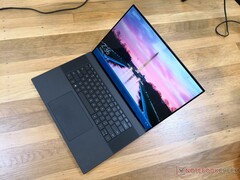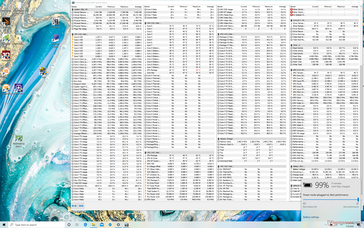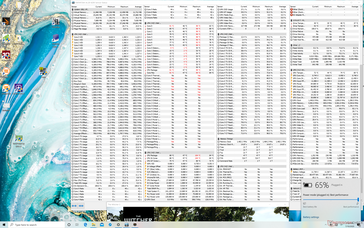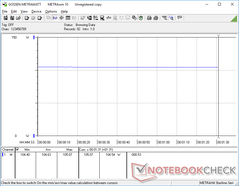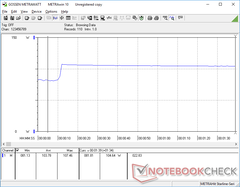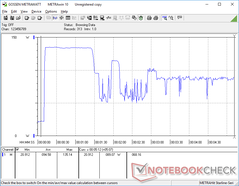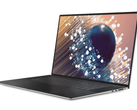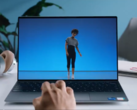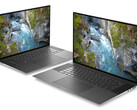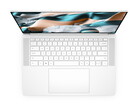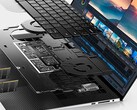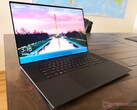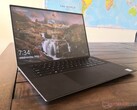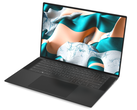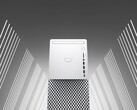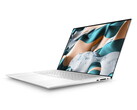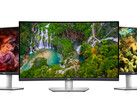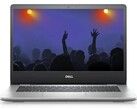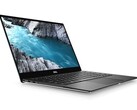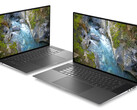(10 de julio de 2020 10:59 AM actualización: Dell ha respondido a nuestra pregunta diciendo que el XPS 17 "puede tirar de más de 130 W" debido a la CPU Core i7 y la GPU RTX 2060 Max-Q de la placa a pesar de que su PSU está clasificada para entregar 130 W.
"Por diseño, permitimos que el sistema aproveche la batería para obtener más jugo cuando eso ocurre", confirma el representante de Dell. "Así que sí, cuando se necesita, el sistema puede sumergirse en la batería y recargarla después."
La alternativa, según Dell, habría sido enviar el XPS 17 con un adaptador de CA más grande y más engorroso que habría hecho que el sistema fuera menos fácil de transportar.
Hemos actualizado nuestro artículo original a continuación para reflejar la nueva información ya que este comportamiento de descarga de la batería no es un error sino una elección de diseño intencional. La tasa de descarga constante cuando se ejecutan altas cargas de procesamiento es un compromiso desafortunado para la CPU y la GPU de alta potencia involucrada).
(10 de julio de 2020 2:00 PM actualización: Dell ha aclarado con nosotros que investigarán la fuente de alimentación del adaptador de CA de 130 W. El adaptador debería ser capaz de proporcionar 130 W de potencia al portátil en lugar de los ~105 W máximos que estamos registrando. Así, mientras que la lenta tasa de descarga de la batería puede ser normal cuando se ejecutan cargas exigentes, puede ser más rápida de lo que Dell estaba anticipando inicialmente. Continuaremos actualizando esta página según sea apropiado).
Estamos hasta el cuello en nuestra revisión del cacareado XPS 17 9700 equipado con la CPU octa-core Core i7-10875H, la GPU GeForce RTX 2060 Max-Q, y una pantalla táctil 4K 16:10 y, sin embargo, ya hemos descubierto un fallo importante. En este caso, el portátil de 17,3 pulgadas parece tener inconvenientes para recargar la batería cuando se encuentra bajo altas cargas de procesamiento como en los juegos. Somos capaces de reproducir esto de forma fiable con una unidad proporcionada por Dell.
¿Cuál es el fenómeno?
Ejecutar cualquier carga de procesamiento que requiera más de 100 W hará que la batería se agote lentamente con el tiempo cuando debería estar recargándose en su lugar. El problema no es exclusivo del XPS 17, ya que algunos modelos antiguos de Razer Blade Stealth y Microsoft Surface Book presentarían problemas de carga similares. Todos estos sistemas pueden recargarse a través de USB-C.
Los SKU del XPS 17 de gama baja sin la GPU discreta Nvidia RTX pueden no sufrir este problema de forma muy parecida a lo que observamos en los SKU Razer Blade Stealth más antiguos con y sin la GPU discreta Nvidia MX150.
How We Reproduced The Battery Drain
We first started on a full battery charge of 100 percent and a battery capacity of 91 Wh as reported by HWiNFO. Then, we would run Witcher 3 at 1080p High settings while observing for any changes to the battery. Sure enough, battery percentage and remaining capacity would drop to 65 percent and 60.5 Wh, respectively, after two hours of gameplay. The steady decline in battery capacity can be observed and recorded by the second.
When we closed the game, the recharge rate would jump back to normal.
Why Is This Happening?
The official specification for power-over-Thunderbolt 3 is up to 100 W, but Dell’s unique implementation for the XPS 15 and XPS 17 series is set to 130 W instead since these are high-power laptops running on demanding Core H-series CPUs and GeForce GTX/RTX graphics. What we’re seeing is that the total system power when running Witcher 3 is around 135 W, but our Gossen multimeter reveals that the system can only pull a maximum of 105 W from the AC adapter as shown by our graphs below. It’s safe to assume that this difference is responsible for the slow battery drain when running the game.
Top 10 Análisis
» Top 10 Portátiles Multimedia
» Top 10 Portátiles de Juego
» Top 10 Portátiles de Juego ligeros
» Top 10 Portátiles Asequibles de Oficina/Empresa
» Top 10 Portátiles de Juego Ligeros
» Top 10 Portátiles de Oficina/Empresa Premium
» Top 10 Estaciones de Trabajo
» Top 10 Subportátiles
» Top 10 Ultrabooks
» Top 10 Convertibles
» Top 10 Tablets
» Top 10 Tablets Windows
» Top 10 Tablets de menos de 250 Euros
» Top 10 Phablets (>5.5")
» Top 10 Smartphones
» Top 10 Smartphones (≤5")
» Top 10 Smartphones de menos de 300 Euros
» Top 10 Smartphones de menos de 120 Euros
» Top 10 Portátiles de menos de 1000 Euros
» Top 10 Portátiles de menos de 500 Euros
» Top 10 Portátiles de menos de 300 Euros
» Los Mejores Displays de Portátiles Analizados por Notebookcheck
Are Other XPS 17 Users Experiencing The Same Phenomenon?
A quick look at the Dell Reddit page shows several posts with similar charging problems as what we’ve described here. We certainly can’t confirm each source, but we can’t deny them either based on our own experience here.
(July 10, 2020 update: The Precision 5750 series, which is based on the same XPS 17 chassis, will also exhibit the same battery drain disadvantage when under demanding loads. This will probably be a greater annoyance to Precision users who are more likely to run high loads for longer periods than XPS 17 owners.)
Can This Be Fixed?
Dell has confirmed that the battery discharge behavior is intentional and no "fix" is planned, but there will be an investigation on the 130 W AC adapter. The bright side is that this likely won't impact most XPS 17 owners since you would have to be running extreme loads for about 6 hours straight to fully discharge the battery — an unlikely scenario. From a consumer's perspective, however, plugging in your laptop comes with the expectation that the battery will not drain. To have the opposite be true will indubitably confuse the user base as exemplified here.
It's worth mentioning that Razer faced a similar issue with its 2018 Blade Stealth series before ultimately addressing it for the 2019 refresh. After all, it's hard to argue with the phrase "If I plug in my laptop, I expect it to recharge".
It’s important to note that the XPS 15 9500 uses the same 130 W AC adapter as the XPS 17 9700 and we experienced no such charging issues on the 15.6-inch model. In fact, we were able to observe power consumption rates of up to 135 W on the XPS 15 whereas the XPS 17 is "capped" at 105 W.




